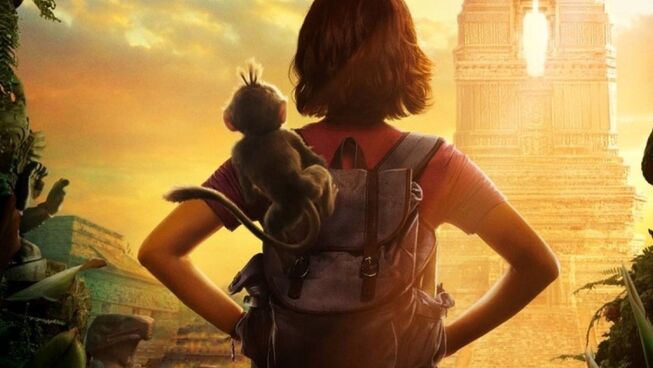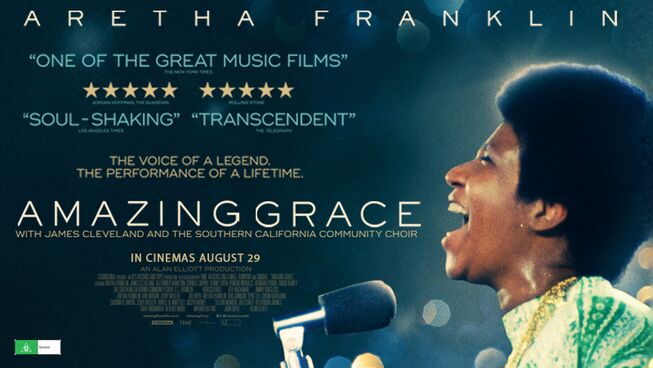
Dora the Explorer (Isabela Moner) seems to be suffering from an identity crisis. The primary school-aged explorer who has had a faithful following on Nickelodeon or Nick Jr for two decades is trying to grow up. As her audience over the years has turned into teenagers, Dora and the Lost City of Gold is attempting to make the precocious little girl into an awkward teenager. The only problem is that most of her previous fans have moved on and a new generation of toddlers have now connected with Boots, Swiper, and Backpack. Leaving this film with the difficult task of redefining the young explorer’s target market and determining what to do with the little ones she leaves behind in the jungle.

Like most of the classic Disney films of late, director James Bobin (The Muppets) attempts to take up the challenge of pushing this animated icon into the world of live-action. While taking the genre-bending feat, the accomplished comedic director has to move this beloved children’s character into an older demographic. This happens rather quickly on-screen where we find Dora in the Peruvian rainforest with her parents and faithful exploring cousin, Diego (Malachi Barton). When her cousin moves to the big city, the little explorer must go on narrative adventures alone with Boots, Backpack and her winsome personality.
Moving ahead 10 years, Dora is now a teenager and her folks (played by Michael Peña and Eva Longoria) decide that they must go on an expedition to find the hidden Inca city of Parapata. The two professors cannot take their daughter with them and choose to send her to live in Los Angeles with her aunt, uncle and her cousin, Diego (Jeff Wahlberg). Even though she has the same energetic and bubbly personality, her cousin has turned into a disenfranchised teen who does not want to draw any attention to himself at school.

The culture clash that occurs between the two young relatives comes to a head after numerous embarrassing situations occur at high school. Things begin to change when the students all go on an expedition to the local natural history museum. Dora and Diego along with two other students get kidnapped by a group of treasure hunters who want to discover the whereabouts of her parents. This leads to a series of jungle adventures that forces Dora to learn the lessons from the world around her and determine what is important in this life.
One thing that can be learned from the Dora the Explorer television show is the value of a map that helps to guide the little girl on her journeys. This must have been a forgotten aspect in the development of this film, because the whole production lacks direction, purpose or identity. The one thing that this movie has going for it is the committed performance of Isabela Moner (Instant Family). Despite the confusing storyline and haphazard manner of storytelling, the young actress stays focussed and convincing as the teen adventurer. Beyond this up-and-coming actor’s performance, there is little else to celebrate about Dora and the Lost City of Gold.

What should parents know about live-action Dora? The script is too infantile for teens, but too scary for the little ones. This became evident with a multitude of tears being shed during the scarier scenes in the screening. Then to add the less than convincing performances from the rest of the cast and numerous references being lifted from the Indiana Jones franchise, this became a painful and confusing affair. With the inclusion of a drug-induced animated trip, inexplicable nudity by the only adult in the jungle entourage, the creepiest voiceover this year by Danny Trejo (Machete) and relying on the familiar trope of the idiotic adults being led by brave young teenagers, this whole story went down the ‘poo hole’ that was dug earlier in the journey without the ‘poo song.’
Hopefully, this is the one and only crusade for live-action Dora. Nickelodeon needs to allow the little explorer to go back to where she is best suited, teaching little ones about the basics of life with Map, Backpack and Boots by her side.

L-r, Eva Longoria, Isabela Moner and Michael Peña star in Paramount Pictures' "DORA AND THE LOST CITY OF GOLD."
Reel Dialogue: We need female heroes
As a father of three daughters and one son, something that should be celebrated is the female hero. The problem with most of the female characters portrayed on the big screen is they tend to be overly sexualised or stripped of all femininity or are not allowed to show any actual physical or emotional strength. It is an identity crisis that is not new to our modern era, but when the studios do manage to find the right combination of power and femininity, it is no wonder that they explode in popularity. Hence, the successful examples of the recent incarnations of Wonder Woman and Beauty and the Beast.
Christianity tends to get a bad wrap for not celebrating women, but this is not an honest depiction of what can be found in the Bible. Throughout the text, there are examples of strong women and the men who appreciated them. Names like Rahab, Ruth, Deborah, Mary, Priscilla and many more proved to have quite an impact on history and faith. Also, one aspect of Jesus' ministry was to move society to appreciate and celebrate the value of women. Even the most sceptical historians have to acknowledge that Christianity is a faith that values female heroes.
Passages to consider on the topic of women: The Book of Ruth, Proverbs 31, The Gospel accounts of Matthew, Mark, Luke and John




